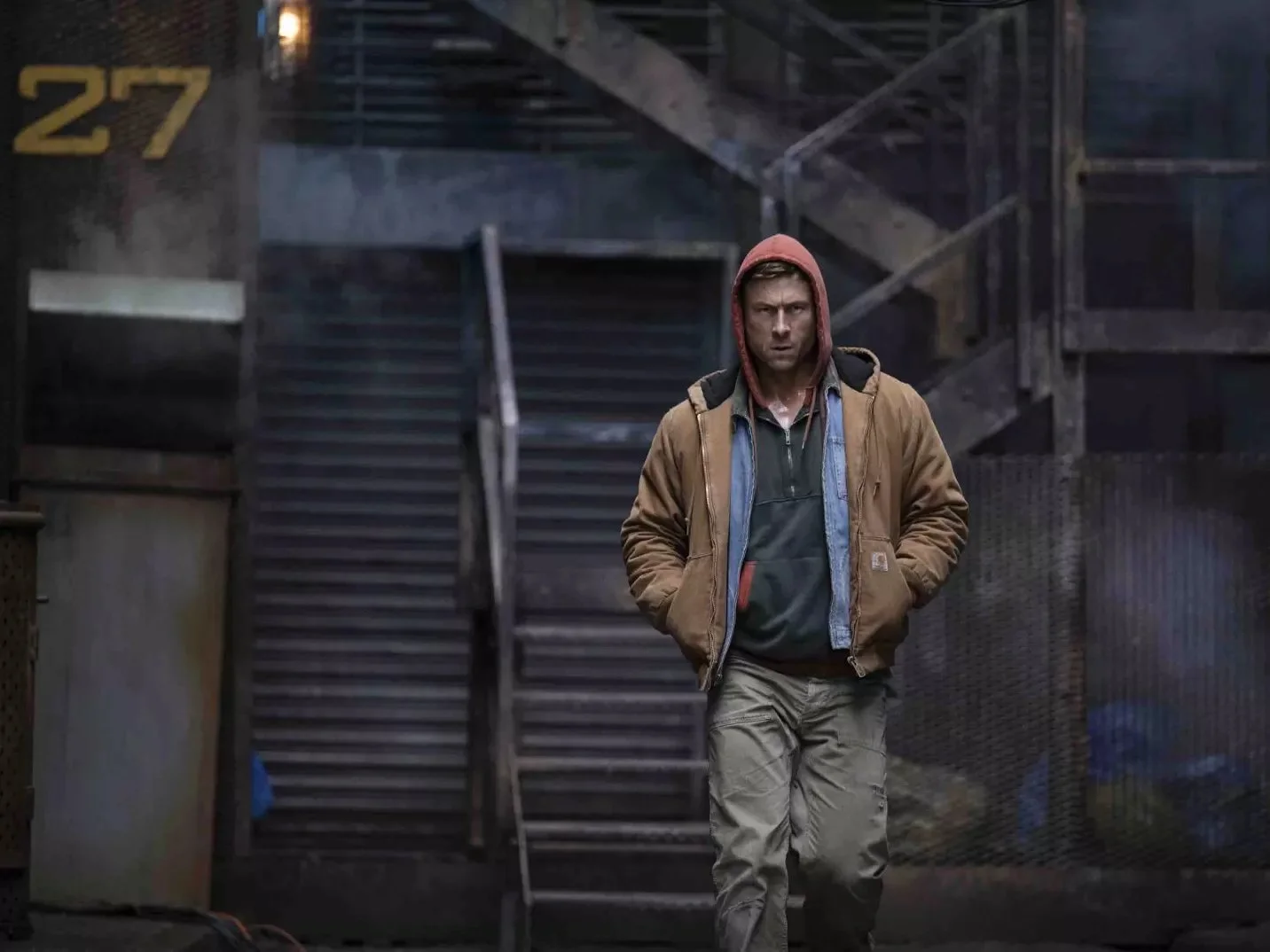2025 ‧ Dystopian Action/Adventure ‧ 133m
Edgar Wright hones the action skills he developed in Hot Fuzz and Baby Driver with a new adaptation of The Running Man, the fourth Stephen King adaptation of this year.
In an alternate 2025, a media company known simply as The Network controls a totalitarian government. There is rampant poverty and The Network offers free television programing to squelch any uprising. Keep the people entertained and they won’t be upset enough to organize and take back the government. One popular program is The Running Man, wherein a contestant must survive 30 days while being hunted by The Network’s Hunters. They get money for every day they survive and if they make the full 30, they will be given one billion dollars. Regular citizens can win money if they tip off The Network to the contestant’s whereabouts. Ben Richards, played by Glen Powell, has been black-listed from many jobs due to insubordination and attempts at forming a union. Unable to find work, his wife works many hours to make ends meet. Their daughter Cathy is sick, and they need money for medicine. In an act of desperation, Richards auditions for The Network’s gamut of programming, assuming he would be picked for a different show where he could win a small but helpful sum for Cathy. His angry persona strikes a chord with the interviewers and he is selected to be on the titular show. With his own skills and the aide of a few underground revolutionaries, Richards soon finds himself dodging the Hunters and becoming a media sensation.
Glen Powell is engaging as Ben Richards, though sometimes his anger is a little hammy. This is likely a satirical choice, but it does not always work. Fans of his multiple disguises in Hitman will enjoy seeing him flex that skill again here. Josh Brolin is slimy as Killian, the Network exec behind the program, but still fun to watch. Michael Cera plays an underground revolutionary who aides Richards. The role is actually quite fitting for Cera and it is one of the more memorable and entertaining elements of the film. Coleman Domingo is a treat as the host of the show, though one can not help but wonder how Ryan Seacrest would have been. Though perhaps that would have been too much like the 1987 adaptation with Richard Dawkins.
Edgar Wright is probably more known as a comedy or horror director, but his action is typically a major element in his features. Hot Fuzz may lampoon the Police Action genre, but it required the Michael Bay level skills to pull off. The Running Man is a satire, but action sequences are not usually the butt of the joke. It shares more satirical DNA with Robocop than Hot Fuzz. Though funny, and at times cathartic, much of the satire is unsubtle. The Network’s big N has an obvious real-life inspiration. And sub-textually, it is extra hilarious that Paramount released this film with all that is going with them in 2025. Not that Wright could have planned that. The media critique is not especially deep, but in an era of waning media literacy, perhaps it is to be expected. The film is still fun and entertaining.
The Running Man is a fun actioner with an albeit unsubtle satirical bite that audiences will likely find enjoyable. Just as one hopes The Long Walk will one day feel less revenant, one hopes that someday this film feels less cathartic.
Grade: B-
Stephen King fans, or Constant Readers as they are called, have had quite the year to enjoy King at the cinemas. King has been a media presence for over 50 years and there are often several adaptations, both film and television, that are released each year. 2025 however had the rare treat of four major release adaptations in the calendar year: The Monkey, Life of Chuck, The Long Walk, and The Running Man. Sadly the release schedule did not have one film each season, evoking King’s collection Different Seasons, but it almost did.
This is not exactly like twin films, but the 4 films can be easily paired. Dytopic Bachman films, movies based off books “by” King’s pseudonym Richard Bachman: The Long Walk, and The Running Man; and Death films: The Monkey, and Life of Chuck. Though death is a factor in all the films, The Monkey and Life of Chuck both deal with Death the concept, Death with a capital D. Interestingly, both Death films were released by Neon. One could also pair the two films with Mark Hamil as a set: Life of Chuck and The Long Walk, though it would make for a more jarring double feature.
Both Bachman films also take place in worlds with authoritarian governments. One a fascist military regime, The Long Walk, and a fascist corporate one, The Running Man. Genre films, especially horror and sci-fi, tend to reflect the anxieties of the times they are made. When King wrote the Bachman books, he was exorcising his fears about Vietnam and Nixon. These stories still resonant, even if the analogy is not one-to-one. We have different politicians and are now reckoning more and more with gun violence within the US. The adage “History doesn’t repeat itself but it sure does rhyme,” comes to mind.
The Death films have a much more evergreen feel to them because Death is always something in our lives. Oz Perkins’s The Monkey is a processing of how loved ones’ death and how that grief affects us when we are younger, and Mike Flanagan’s Life of Chuck is about one facing Death head on. Death is playful, absurd, but still tragic in Perkins’s film. Somewhat fitting when you know how his real life parents died. Flanagan, ever the philosopher with his signature ponderous monologues, looks at Death as a culmination of life. Fearful, but not necessarily scary. The end of little moments that make a life fulfilling and completes someone. It’s a rumination of Death, and in that sense highlights the tragedy more that The Monkey.
These four films, even with their pairings, showcase an interesting sampler of all things Stephen King. There is his famous horror, but also his deep characters, views on America, small town life, and just life in general. Perhaps the most interesting aspect is that there is something superlative about each title.
Best Use of Mark Hamil: Life of Chuck.
Most Entertaining for non-King Fans: The Running Man
Most Entertaining for King Fans: The Monkey
Best, in general: The Long Walk
Constant readers, and movie-goers may not get a year like this for a while. Though mileage is going to very, each of these films offers a great representation of Stephen King the man, the author, and the cultural icon.
~Andrew
For the reviews of the other 2025 Stephen King films, click HERE for The Monkey,































